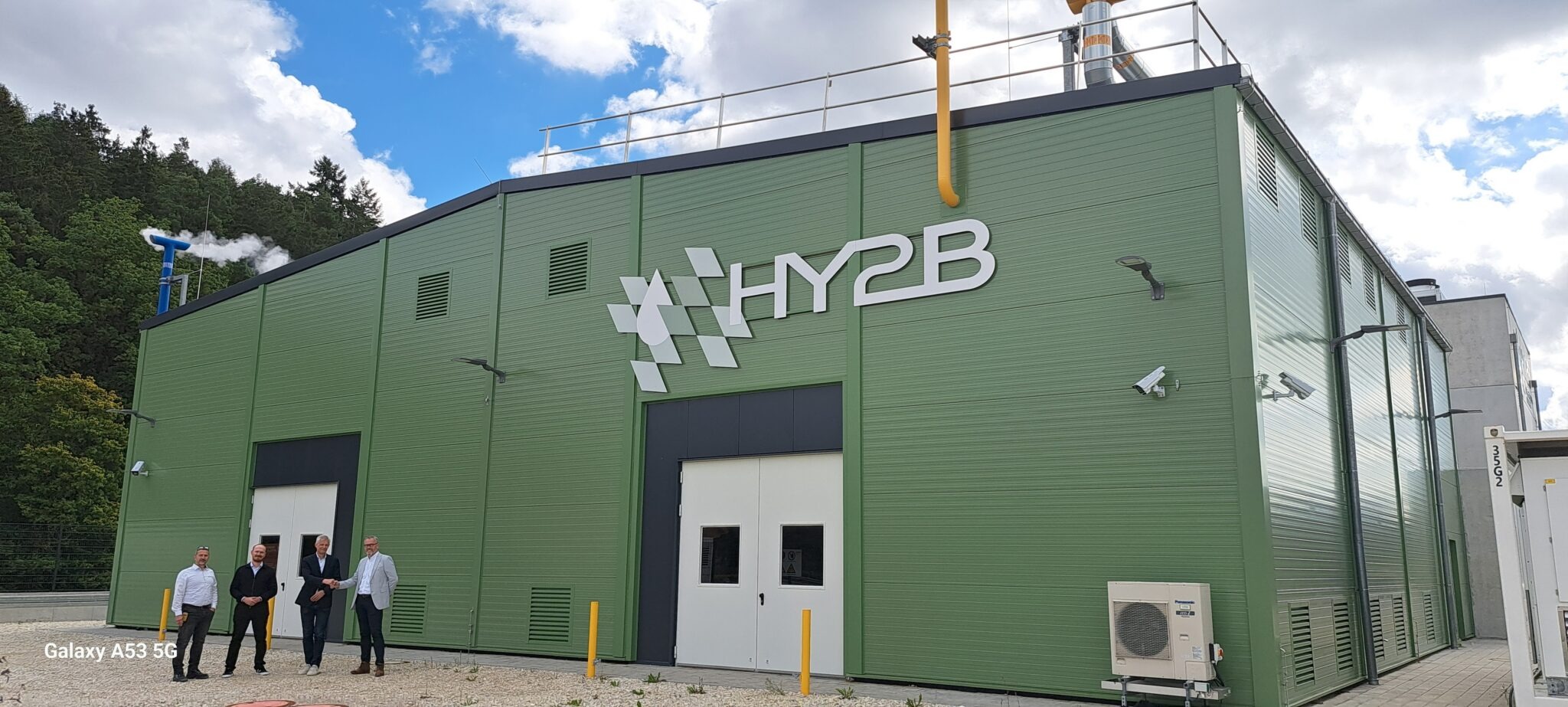Hy2B Wasserstoff GmbH has achieved two major milestones, paving the way for a sustainable, decentralized hydrogen economy in Germany.
First, Hy2B has been certified as a producer and distributor of green hydrogen. This certification, which aligns with the European Renewable Energy Directive, allows Hy2B to produce and supply RFNBO (Renewable Fuels of Non-Biological Origin).
Second, Hy2B is launching a grid-integrated automatic and controlled power operation. The company’s 5-megawatt electrolyzer in Pfeffenhausen serves a dual purpose. Not only does it produce green hydrogen economically, but it also provides a grid-stabilizing function. By acting as a controllable load on the often-strained power grid, it helps to reduce the curtailment of surplus solar energy and supports the development of a stable, decentralized energy supply.
The 5-megawatt (MW) electrolyzer at Hy2B’s facility in Pfeffenhausen, Germany, is a significant step toward a regional hydrogen economy, but it’s important to put its capacity into context with other major projects. While 5 MW is a considerable capacity for a single plant, it is on the smaller side when compared to some of the largest green hydrogen projects currently underway or planned in Germany.
Comparison with Larger Projects in Germany
Several projects in Germany are planned or under construction with significantly larger capacities, often in the hundreds of megawatts or even gigawatts. These projects are part of Germany’s broader National Hydrogen Strategy, which aims for an installed electrolysis capacity of 10 GW by 2030.
- FFI and TES’s Wilhelmshaven Green Hydrogen Production Plant: This project is one of the largest planned in Europe, with an estimated capacity of 1,730 MW.
- Green Wilhelmshaven Project (Uniper): Another massive project in Wilhelmshaven is planned with a capacity of 1,000 MW (1 GW).
- H2APEX’s Lubmin Green Hydrogen Production Plant: This plant is also planned for 1,000 MW.
- Lhyfe’s Lubmin Green Hydrogen Production Plant: This project has an expected capacity of 800 MW.
- GET H2 Nukleus Project (BP, Evonik, RWE): A large-scale project aiming for a capacity of 300 MW.
Hy2B’s Role in the Hydrogen Landscape
While Hy2B’s 5 MW facility may not be the largest in terms of sheer capacity, its strategic importance lies in its local and decentralized approach.
- Regional Focus: Hy2B’s project is designed to serve a specific region, providing green hydrogen for local bus transport and other users in the Munich metropolitan area. This contrasts with the larger gigawatt-scale projects, which are often aimed at large-scale industrial decarbonization and national or international distribution.
- Grid-Stabilizing Function: A key feature of the Hy2B electrolyzer is its ability to operate as a controllable load on the power grid. This helps to balance the grid by utilizing surplus solar energy, which would otherwise be wasted. This dual role of production and grid stabilization is a crucial element for a successful transition to a decentralized, renewables-based energy system.
- Scalability: Hy2B has plans to expand the electrolyzer to 10 MW in the coming years, demonstrating a scalable model that could be replicated in other regions.


